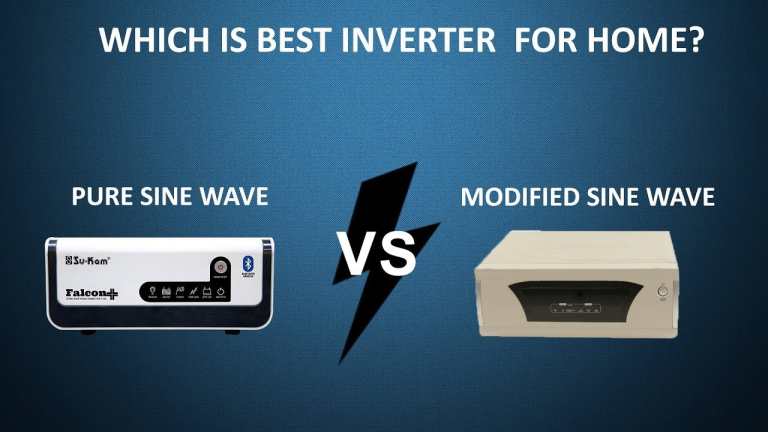Choosing the Right Pure Sine Wave Inverter for Your Needs
Choosing the Right Pure Sine Wave Inverter for Your Needs
Introduction
Pure sine wave inverters play a crucial role in converting DC (direct current) power into AC (alternating current) power, ensuring a stable and high-quality electrical supply for various applications. Whether you’re planning to use an inverter for your home, recreational vehicle (RV), solar power system, or any other application, selecting the right pure sine wave inverter is essential. In this comprehensive guide, we will explore the factors that should influence your decision when choosing the perfect pure sine wave inverter to meet your specific needs.
- Understanding Pure Sine Wave Inverters
Before delving into the selection process, let’s start with a fundamental understanding of pure sine wave inverters. A pure sine wave inverter generates electrical output that mimics the smooth and sinusoidal waveform of grid power. This clean and stable power output is essential for sensitive electronics, motors, and appliances, as it prevents equipment damage and ensures optimal performance.

- Assessing Your Power Needs
The first step in choosing the right pure sine wave inverter is to assess your power requirements. Consider the following factors:
a. Total Power Consumption: Calculate the total power consumption of all the devices you plan to connect to the inverter. Make a list of the wattage ratings for each device to determine your peak power requirements.
b. Surge Power: Many appliances have a surge power requirement, which is higher than their rated power consumption. Your inverter should be able to handle these peak loads without issue.
c. Continuous Power Rating: Inverters are typically rated for continuous power output. Choose an inverter with a continuous power rating that exceeds your total power consumption to ensure smooth operation.
d. Future Expansion: If you plan to expand your power needs in the future, consider choosing an inverter with some extra capacity.

- Inverter Types and Sizes
Pure sine wave inverters come in various sizes and types, catering to different applications. Some common types include:

a. Off-Grid Inverters: These inverters are ideal for standalone power systems, such as solar or wind installations in remote areas.
b. Grid-Tied Inverters: Designed for systems connected to the grid, grid-tied inverters feed excess power back into the grid and are commonly used in residential solar installations.
c. Hybrid Inverters: These inverters combine the capabilities of off-grid and grid-tied inverters, offering flexibility and energy storage options.
d. Portable Inverters: Compact and lightweight, these inverters are perfect for camping, boating, and other mobile power needs.
e. Heavy-Duty Inverters: Suitable for industrial and commercial applications, these inverters offer high power output.
Consider the specific type of inverter that matches your application. Additionally, the inverter’s physical size and weight should align with your installation requirements.
- Inverter Efficiency and Quality
Efficiency is a critical factor when selecting a pure sine wave inverter. Higher efficiency inverters convert a greater percentage of the DC power into AC power, resulting in less energy waste and reduced operating costs. Look for inverters with a high efficiency rating, typically expressed as a percentage.
Quality and reliability are equally important. Research different brands and models to find an inverter with a proven track record for durability and long-term performance. Reading customer reviews and seeking recommendations from experts can help you assess the quality of a particular inverter.
- Input Voltage and Battery Compatibility
Your inverter’s input voltage should match the voltage of your battery bank. Common battery voltages for off-grid and RV applications are 12V, 24V, or 48V. Ensure that your inverter’s input voltage matches your battery setup.

- Additional Features
Consider any additional features that may enhance your user experience or better accommodate your specific needs:
a. Remote Monitoring and Control: Some inverters come with remote monitoring and control capabilities, allowing you to adjust settings and monitor performance from a distance.
b. Built-in Chargers: Inverters with built-in chargers can simplify the process of recharging your battery bank.
c. Safety Features: Look for features like overload protection, short-circuit protection, and thermal shutdown to ensure the safety of your inverter and connected devices.
d. Warranty: A longer warranty period indicates the manufacturer’s confidence in their product’s durability and reliability.
- Budget Considerations
Inverter prices can vary significantly based on their power output, quality, and features. Set a realistic budget that aligns with your needs and preferences. Keep in mind that while it may be tempting to choose the least expensive option, investing in a higher-quality inverter can save you money in the long run by reducing maintenance and replacement costs.
- Installation and Wiring
Ensure that your chosen inverter is compatible with your existing electrical system and installation requirements. In some cases, professional installation may be necessary to ensure proper connection and compliance with safety standards.
- Environmental Considerations
Consider the environmental conditions where your inverter will be used. Inverters designed for outdoor use should be weatherproof and able to withstand temperature extremes. Conversely, indoor inverters may have different design features.
- Conclusion
Selecting the right pure sine wave inverter is a crucial decision to ensure a reliable and high-quality power supply for your specific needs. By thoroughly evaluating your power requirements, understanding the different types of inverters, assessing efficiency and quality, and considering additional features, you can make an informed decision that will serve you well for years to come.
Remember that each application has unique requirements, so take the time to research and consult with experts if necessary. With the right pure sine wave inverter, you can enjoy uninterrupted and clean power for your home, RV, or any other application, enhancing your overall quality of life and reducing the risk of electrical equipment damage.


